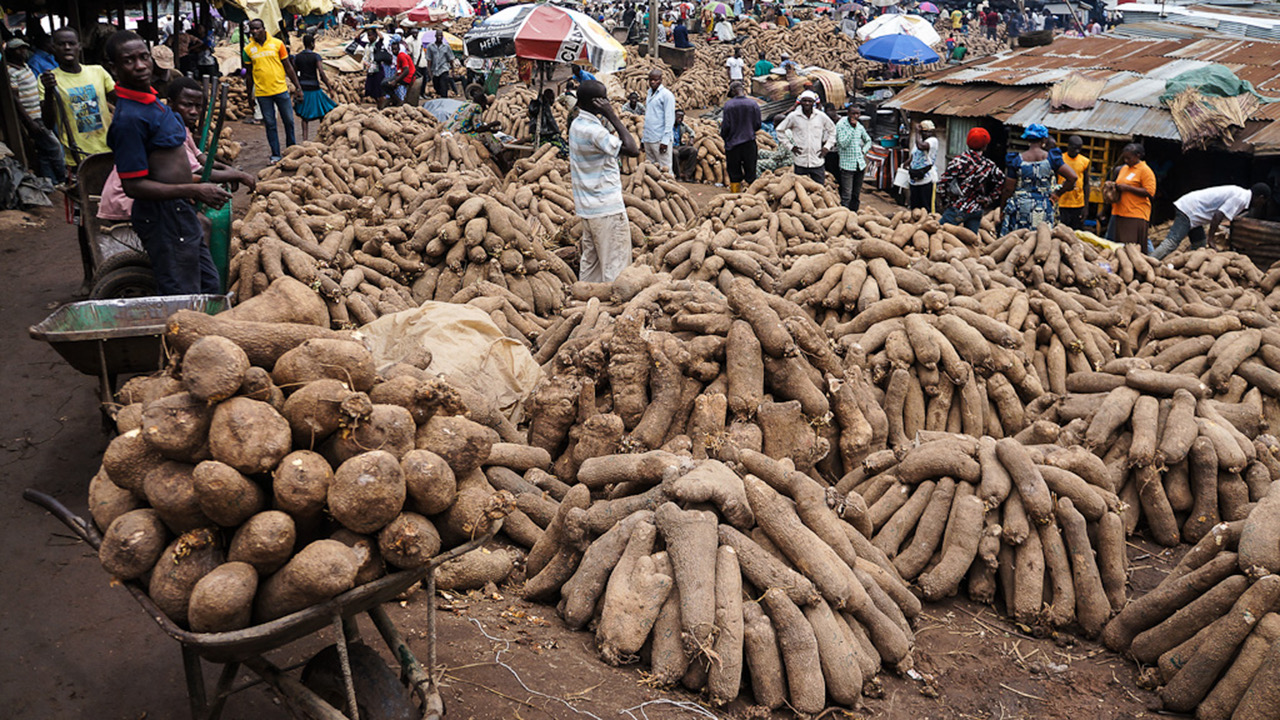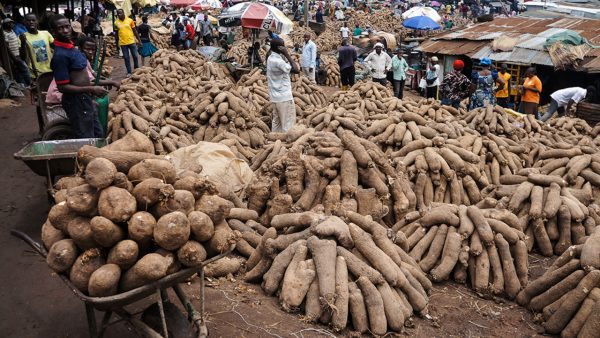As one of Nigeria’s staple crops, yam features prominently in the local cuisine. Its tubers are sliced up and boiled, roasted, and fried— or pounded –and served along with a vast array of sauces. It is even an important part of the culture in certain regions of the country.
Read more about Agriculture
There are good grounds for making yam a unique symbol of tradition in Nigeria. Not least the fact that the country grows most of the world’s supply of the crop. An FAO estimate from 2019 puts Nigeria’s annual yam output at 47.9 million tonnes. That’s more than five times the volume grown by Ghana, the second-largest producer of the crop.
On the whole, Nigeria accounts for well over 60% of yams cultivated on earth. Although there are some yam farming in the Caribbean and parts of South East Asia and South America, the vast majority of yams are produced in West Africa. The top five yam growing countries are all located in the region.
This isn’t a surprise, given the long history of the crop in West Africa’s rain forest belt. Historians say it was among the first crops to be domesticated in the area, several thousand years ago. In the eras that followed, it became an important part of the economy of many African societies and continues to retain its status as one of the continent’s major food crops.
But yams aren’t grown uniformly across Nigeria. There’s not a lot of yam cultivation going on in the far north, for example. The top yam producing states in the country are located in the ‘Middle Belt’, with Benue, Taraba, Nasarawa, and Adamawa states leading the others. Substantial production also happens across southern Nigeria.
Sign up to the Connect Nigeria daily newsletter
More can be done with yams besides preparing sumptuous meals. Chemical derivatives from certain species of yam are used in the manufacture of medicines.
An international market for yam exists, fueled by the needs of an African diaspora, as well as other populations that have developed a taste for it. On paper, Nigeria has what it takes to be the leading global supplier of the crop and products made from it.
But the current reality tells a different story. Nigeria exports only minuscule amounts of yams annually. Ghana, which lags far behind Nigeria in terms of production, accounted for 94% of yam exports from West Africa in 2019.
In 2017, the Nigerian government moved to tackle this problem by establishing a yam export scheme. The government plans to support local yam producers and encourage the sale of the product to Europe and the United States. Audu Ogbeh, who was the Federal Minister of Agriculture at the time, said that the country was targeting yearly revenue of $8 billion from the export of yams.
The yam value chain has the potential to generate new wealth for Nigeria and its citizens. Hopefully, stakeholders in this space will get past the impediments to growth and modernization, and, in doing so, help move the country to a more prosperous future.
Featured Image Source: Naija247News
Got a suggestion? Contact us: [email protected]


